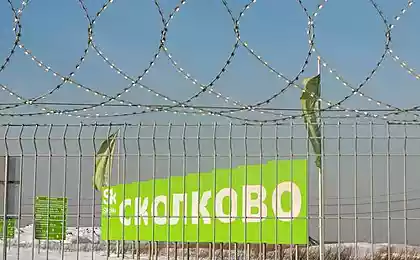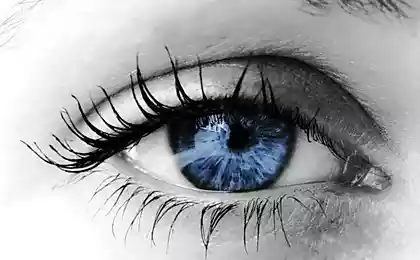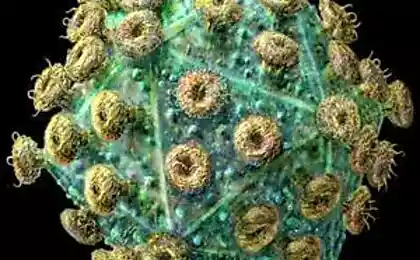545
Russian izhenerov developed a new technology for producing electricity

Engineers from the company Vert Labs, a resident of the Fund "Skolkovo", proposed a draft WEC wave power generated in the distance from the shore of the compressed air from which is already on the banks of the electricity produced. The main advantage of the new system just to use the low waves as usual for the effective operation of WPP require waves of a certain height and intensity.
Of particular interest is the appearance of the plant. The supporting structure consists of seven floats, united in a hexagon movable rails. Each float - on the rotary compressor connected to the rails through the overrunning clutch. When the waves rock floats slats move in a vertical plane. From rails on the freewheel clutch transmits torque. Each clutch rotates the shaft of the compressor, the compressor compresses the air. Driving the compressor - the know-how Vert Labs, it is designed to compress the air, even when one or two revolutions per minute, because low waves can only be a rotation speed. Compressors supplied with compressed air in the compressed air hose that stretches to the coast. On the shore generator converts compressed air energy into electrical energy. Energy losses in the transmission of not more than 1, and 4% to 1 km. Air hose is much easier copper cable, so it can be hung on the floats. It is easier and cheaper than the laying of power lines along the bottom. In addition, environmentally friendly design.
To illustrate the benefits of the station WEC let the fact that today's system Power Buoy 150 company Ocean Power Technologies to the 1st quarter. m. 3150 Watts shoots. But it is at the height of the wave at least 1, 5 m and a nominal power (150 kW), the system comes with high storm surge of 5 m. In the inland seas such as the Mediterranean, the Baltic, the Caribbean considerable time wave height less than 1, 5 m . Development Vert Labs shoots per square meter of 34, 5 W, but even at the height of the wave 0, 6 m - that is, can be used almost everywhere and constantly. Unlike competitive systems, we can accommodate virtually any area. A hexagonal cell has a diameter of 7 m 2 and generates 2.3 kW at a wave height 0, 6 m. Cell 432, networked, will at the same wavelength of 1 MW. The cost of such a network, $ 3, 2 million. The cost of the complex Power Buoy, generating 1 MW, is $ 3, 9 million, "- said the chief engineer Eugene Tabota Vert Labs.
The main competitive advantages of the system are high performance and development of 100% of rated power on a wave height between 0 and 5 m (standard terms in the Far East of the Russian Federation), repetition of standard low-cost float modules, high reliability, flexible collection of energy, without the peak
Wave network is made of plastics, and therefore it is much easier and cheaper compared to the giant metal devices.
Placing the sun and its maintenance will be carried out exclusively from the surface of the sea, and to fix the cells will use mushroom anchors. This alloy lead the hemisphere with through holes, prevents the formation of an air cushion under the anchor. They are used from the middle of the XIX century for a durable, long-term holding, for example, lightships on the bottom of any landscape in strong winds and currents. Thus, the cells can go down into the water from a conventional fishing vessel equipped with a boom of 7 meters.
Source: www.kommersant.ru
Innovation Center "Skolkovo" social networks VKontakte, Twitter, facebook and Google +
Site Facility: www.sk.ru
via factroom.ru
iPhone brings in more revenue than all the activities of Microsoft
On the operational orbit microsatellite launched "Chibis-M", designed to study the effects of storm























